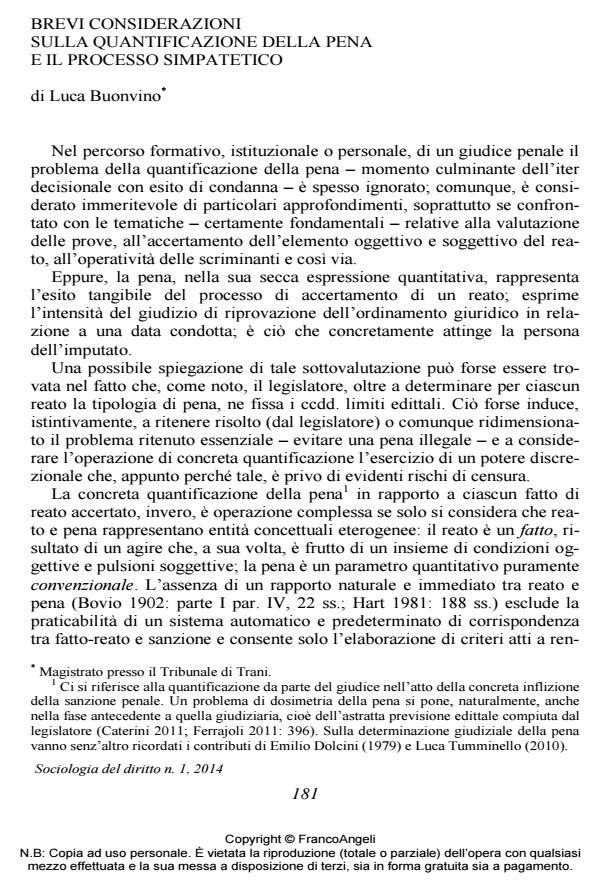Some brief thoughts about the quantification of punishment and the "sympathetic process"
Journal title SOCIOLOGIA DEL DIRITTO
Author/s Luca Buonvino
Publishing Year 2014 Issue 2014/1
Language Italian Pages 8 P. 181-188 File size 125 KB
DOI 10.3280/SD2014-001008
DOI is like a bar code for intellectual property: to have more infomation
click here
Below, you can see the article first page
If you want to buy this article in PDF format, you can do it, following the instructions to buy download credits

FrancoAngeli is member of Publishers International Linking Association, Inc (PILA), a not-for-profit association which run the CrossRef service enabling links to and from online scholarly content.
This essay starts from the consideration that the judge’s operation of quantifying the punishment to be meted out when the accused’s responsibility has been established is only apparently simple and readily solved. When conducted correctly, it is actually complex, because it presumes a moment when the judge knows and understands everything necessary to do with the criminal fact and the personality of its perpetrator. The right method for governing this phase is identified here as the so-called "sympathetic process". Referring to the philosophical theories of sympathy expounded by Adam Smith and by Max Scheler, the article highlights how the sympathetic approach enables the judge to be aware, since it offers him the means to open up to others and to feel an ideal empathic participation in the situations they experience. The judge cannot disregard this approach when making the effort to calibrate society’s punitive response to match the real degree of conflict with right and proper behaviour on the part of the accused.
Keywords: Guilty - Judge - Trial - Punishment - Sympathetic process
Luca Buonvino, Brevi considerazioni sulla quantificazione della pena e il processo simpatetico in "SOCIOLOGIA DEL DIRITTO " 1/2014, pp 181-188, DOI: 10.3280/SD2014-001008